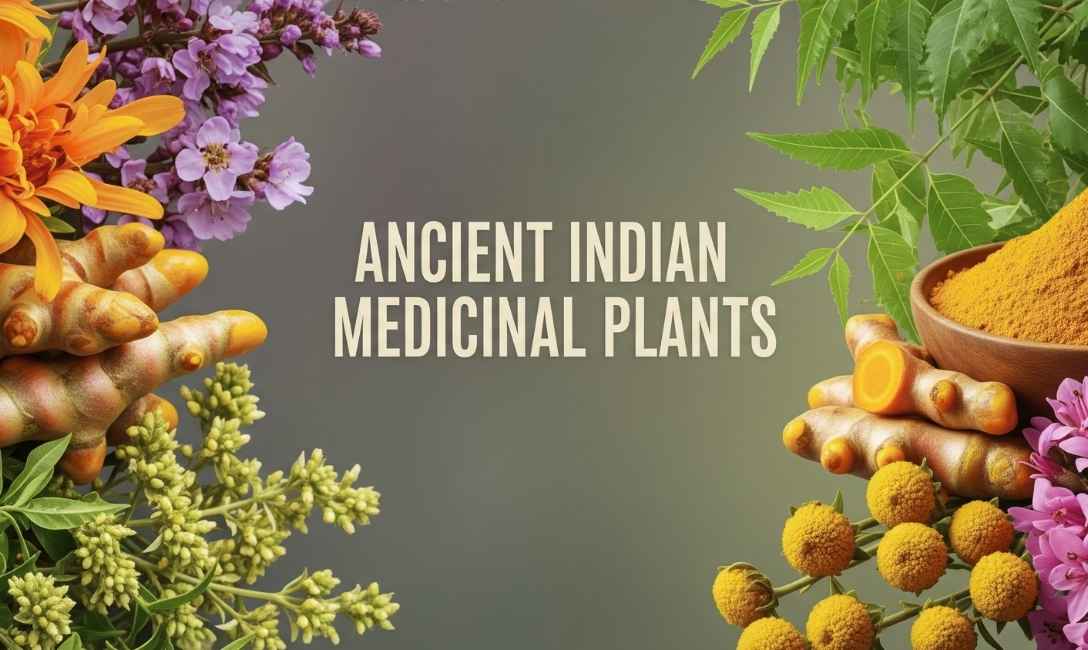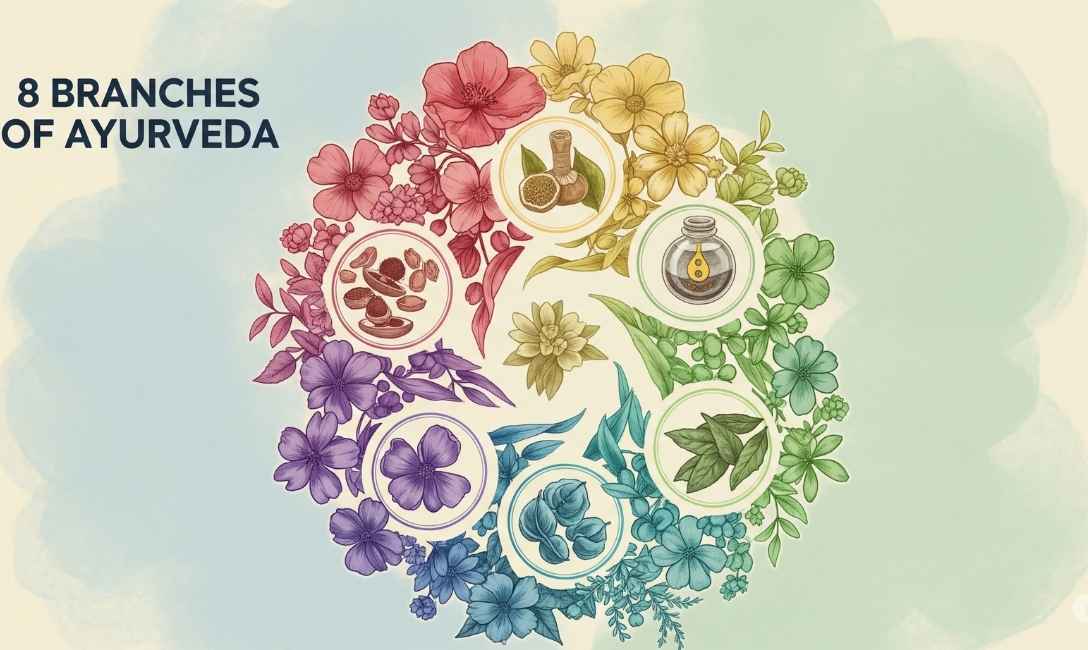Ayurveda, the ancient Indian system of medicine, is more than just a treatment method—it’s a way of life. Rooted in nature and consciousness, Ayurveda has stood the test of time for over 5,000 years. One of its foundational concepts is the “Ashtangas of Ayurveda”, or the Eight Limbs of Ayurveda. These eight branches define the comprehensive nature of Ayurvedic knowledge, encompassing all aspects of human health—from internal medicine to surgery, psychiatry to pediatrics.
In this blog, we dive deep into the Ashtangas of Ayurveda, understanding what each limb represents, how it functions, and why it’s still relevant in modern health practices.
What Are the Ashtangas of Ayurveda?
The term Ashtanga in Sanskrit translates to Ashta (eight) and Anga (limbs or branches). The Ashtangas of Ayurveda represent the eight specialized disciplines of Ayurvedic science:
- Kaya Chikitsa – Internal Medicine
- Bala Chikitsa – Pediatrics
- Graha Chikitsa – Psychiatry
- Urdhvaanga Chikitsa – ENT & Ophthalmology
- Shalya Tantra – Surgery
- Damstra Chikitsa – Toxicology
- Jara Chikitsa – Geriatrics
- Vajikarana Chikitsa – Aphrodisiac Therapy
Each branch is designed to address specific areas of health and well-being, forming a complete and interconnected system for healing and prevention.
1. Kaya Chikitsa (Internal Medicine)
Kaya means body, and Chikitsa means treatment. Chikitsa is the foundation of Ayurvedic therapeutics, dealing with the diagnosis, prevention, and treatment of general ailments and diseases.
Key Focus Areas:
- Digestive disorders (Agnimandya)
- Fever (Jwara)
- Respiratory conditions (Shwasa, Kasa)
- Metabolic diseases like diabetes (Madhumeha)
Importance:
It emphasizes balancing the three doshas (Vata, Pitta, and Kapha) to restore health. Treatments include herbal medicines, panchakarma detox, dietary guidelines, and lifestyle modifications.
2. Bala Chikitsa (Pediatrics)
Also known as Kaumarabhritya, this branch deals with the care of newborns, infants, and children. It covers both preventive and curative aspects of child health.
Key Focus Areas:
- Immunization using herbal formulations
- Breastfeeding and weaning practices
- Childhood diseases like cough, fever, teething issues
- Developmental milestones and nutrition
Importance:
Ayurveda believes the foundation of a healthy life is laid in childhood. Bala Chikitsa also includes preconceptional care and pregnancy management, ensuring holistic health from womb to adolescence.
3. Graha Chikitsa (Psychiatry and Spiritual Therapy)
Also called Bhuta Vidya, Graha Chikitsa explores the mental, emotional, and spiritual well-being of an individual. It includes the treatment of psychological disturbances believed to be caused by negative energies or mental imbalances.
Key Focus Areas:
- Mental disorders like anxiety, depression, psychosis
- Memory enhancement
- Sleep disorders
- Use of mantras, meditation, and spiritual healing
Importance:
This limb integrates mental health and spirituality, using therapies such as Satvavajaya Chikitsa (mind control), counseling, and herbal support to stabilize the mind and emotions.
4. Urdhvaanga Chikitsa (ENT and Ophthalmology)
Also known as Shalakya Tantra, this branch focuses on diseases affecting the head and neck region including the eyes, ears, nose, and throat.
Key Focus Areas:
- Conjunctivitis, cataracts, glaucoma
- Sinusitis, nasal polyps
- Ear infections, tinnitus
- Throat infections and dental issues
Importance:
This branch is unique for its use of specialized surgical instruments (Shalakas) and detailed procedures to address issues above the clavicle. Ayurvedic eye and ENT care are gaining modern relevance through natural and non-invasive therapies.
5. Shalya Tantra (Surgery)
Shalya Tantra is Ayurveda’s branch of surgery and trauma care. Ancient Ayurvedic texts mention surgical procedures long before modern surgical science was developed.
Key Focus Areas:
- Removal of tumors, abscesses, and foreign bodies
- Fistula-in-ano (treated through Ksharasutra)
- Piles, hernias
- Orthopedic surgery and wound management
Importance:
Acharya Sushruta, known as the father of surgery, wrote in detail about surgical instruments, techniques, anatomy, and post-operative care. Shalya Tantra laid the groundwork for many modern surgical innovations.
6. Damstra Chikitsa (Toxicology)
Also called Agad Tantra, this branch specializes in the study and treatment of poisoning from natural or artificial sources.
Key Focus Areas:
- Snake and insect bites
- Food poisoning
- Environmental toxins
- Drug overdoses
Importance:
Damstra Chikitsa also includes preventive education, antidote preparations, and ritual cleansing techniques to combat toxicity. In modern times, it aligns with environmental medicine and detox therapies.
7. Jara Chikitsa (Geriatrics or Rejuvenation)
Also referred to as Rasayana Tantra, Jara Chikitsa is the science of anti-aging, longevity, and rejuvenation.
Key Focus Areas:
- Cognitive decline (memory loss)
- Degenerative disorders like arthritis
- Weak immunity
- Skin aging, hair fall
Importance:
This branch focuses on nourishing therapies, rejuvenating herbs (like Amalaki, Ashwagandha), and rituals that slow aging and preserve youth. Rasayana practices help in boosting Ojas (vital energy) and enhancing quality of life.
8. Vajikarana Chikitsa (Aphrodisiac Therapy)
This branch deals with sexual health, fertility, and reproductive well-being. Vajikarana aims to improve virility, libido, and overall reproductive function.
Key Focus Areas:
- Infertility (both male and female)
- Erectile dysfunction
- Low libido or premature ejaculation
- Enhancing marital satisfaction and vitality
Importance:
Vajikarana uses herbal aphrodisiacs, nutritional therapy, and psychological counseling to restore sexual wellness. It also contributes to producing healthy progeny, which Ayurveda views as a crucial social responsibility.
Interconnectedness of the Ashtangas
Although each of the Ashtangas of Ayurveda has a specific focus, they are deeply interconnected. For example, mental health (Graha Chikitsa) can affect digestion (Kaya Chikitsa), and child health (Bala Chikitsa) often involves ENT care (Urdhvaanga Chikitsa). This holistic model of healing ensures complete physical, mental, emotional, and spiritual well-being.
Modern Relevance of Ashtanga Ayurveda
In today’s world, where chronic illnesses, mental stress, and environmental toxins are common, the Ashtangas of Ayurveda offer a timeless blueprint for health.
- Preventive care through diet, lifestyle, and Rasayana
- Surgical insights from ancient practices (e.g., Ksharasutra in piles)
- Mental wellness supported by meditation and herbs
- Child and elder care that integrates natural immunity and rejuvenation
Ayurveda is now globally recognized as a complementary system to modern medicine. Institutions across the world are integrating its teachings for chronic disease management, wellness programs, and even cancer care.
Final Thoughts
The Ashtangas of Ayurveda form the eightfold path of health rooted in ancient Indian wisdom. Each limb is a testament to the depth and breadth of Ayurvedic knowledge, covering every dimension of life. By understanding and applying these branches, we move closer to true wellness, which is not just freedom from disease but a balanced state of body, mind, and soul.
As we look forward to integrative and sustainable healthcare systems, Ayurveda’s eight limbs continue to shine as a beacon of holistic healing.
FAQs About Ashtangas of Ayurveda
Q1. Who introduced the concept of Ashtanga Ayurveda?
The concept is elaborated in ancient texts like Charaka Samhita and Sushruta Samhita, composed by Acharyas Charaka and Sushruta.
Q2. Is surgery a part of Ayurveda?
Yes. Shalya Tantra is the Ayurvedic branch of surgery, with detailed descriptions of surgical procedures and instruments.
Q3. Can Ayurveda treat mental health issues?
Absolutely. Graha Chikitsa addresses psychiatric conditions using herbs, counseling, and spiritual healing.
Q4. What is the modern use of Rasayana?
Rasayana is used in anti-aging therapies, immunity boosting, and rejuvenation treatments across Ayurvedic clinics worldwide.




